《ATM解决因特网,企业网和居民宽带的新途径 英文版》
| 作者 | (美)(T.夸克)Timothy Kwok著 编者 |
|---|---|
| 出版 | 北京:清华大学出版社 |
| 参考页数 | 352 |
| 出版时间 | 1998(求助前请核对) 目录预览 |
| ISBN号 | 7302028206 — 求助条款 |
| PDF编号 | 87571248(仅供预览,未存储实际文件) |
| 求助格式 | 扫描PDF(若分多册发行,每次仅能受理1册) |
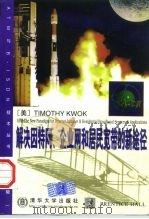
PartⅠ1
MultimediaApplicationsRequirements,1
Chapter13
MultimediaApplicationsandATM,3
1.1InteractiveMultimediaApplications,3
1.1.1 ATM,4
1.1.2 ATMandtheInternet,5
1.1.3 ATMandtheIntranets,8
1.1.4 ATMandResidentialBroadbandNetworks,8
1.2AnIdealCommunicationsNetwork,9
1.2.1 Distance,9
1.2.2 Location,9
1.2.3 Time,10
1.2.4 Media,10
1.3 SummaryandOutlineofThisPart,12
1.4 References,12
Chapter215
NetworkArchitectures:TheTelephoneNetwork,theInternetandIntranets,15
2.1Introduction,15
2.2NetworkingArchitectures,16
2.2.1 FullyConnectedPoint-to-pointNetworks,16
2.2.2SwitchedPoint-to-pointNetworks,18
2.2.2.1 CircuitSwitching,19
2.2.2.2 PacketSwitching,22
2.2.2.3 PermanentConnections,27
2.2.3BroadcastNetworks,27
2.2.3.1 One-wayBroadcast,27
2.2.3.2 Two-wayCommunications,28
2.2.3.3 CircuitSwitchingonSharedMedium,28
2.2.3.4 PacketSwitchingonSharedMedium,29
2.3LimitationsofToday sNetworkInfrastructures,30
2.3.1TelephoneNetworks,30
2.3.1.1 Characteristics,30
2.3.1.2 Limitations,31
2.3.2TheInternetandIntranets,32
2.3.2.1 Characteristics,32
2.3.2.2 Limitations,37
2.4 Summary,39
2.5 References,40
Chapter341
AnApplicationClassification,41
3.1Introduction,41
3.2CommunicationsApplications,42
3.2.1 Definition,42
3.2.2NetworkingAttributesofanApplication,42
3.2.2.1 InformationTypes,42
3.2.2.2 DeliveryRequirements,43
3.2.2.3 Symmetry,44
3.2.2.4 NumberofParties,46
3.2.2.5 WiredorWirelessAccess,47
3.2.2.6 Mobility,48
3.2.2.7 HumanversusNon-Human,49
3.3AClassificationofApplications,50
3.3.1 Real-timeStreamingApplications,50
3.3.2Real-timeBlockTransferApplications,52
3.3.2.1 InternetApplications,53
3.3.2.2 WebBrowsing,53
3.3.2.3 Bandwidth-versusLatency-Limited,55
3.3.3 Non-realtimeApplications,56
3.4 Summary,58
3.5 References,58
Chapter459
ApplicationTrafficRequirements,59
4.1Introduction,59
4.1.1 ApplicationsRequirements,60
4.1.2 TrafficandQoSRequirements,61
4.2TrafficGenerationParterns,61
4.2.1 ArrivalDistribution:ContinuousversusBurstyTraffic,62
4.2.2 ADULengthDistribution,62
4.2.3PacketLengthDistribution,63
4.2.3.1 PacketLossProbability,64
4.2.3.2 MTUSizeofLinkLayer,64
4.2.3.3 DefaultPacketSizeLimit,64
4.2.3.4 PacketizationDelay,65
4.2.3.5 TransmissionDelay,65
4.2.3.6 EffectsofLossPackets,65
4.2.4 Self-similarityTraffic,66
4.2.5 CBRversusVBR,66
4.2.6 TrafficShaping,67
4.2.7 AdaptiveApplications,69
4.2.8 TrafficAsymmetry,69
4.3BandwidthRequirements,70
4.3.1BandwidthParameters,70
4.3.1.1 PeakBandwidth,70
4.3.1.2 AverageBandwidth,71
4.3.2 Real-timeStreamingApplications,72
4.3.3 Real-timeBlockTransferApplications,73
4.3.4 Time-basedInformationDeliveryRequirements,75
4.3.5 UserLevelBehavior,76
4.4 Summary,77
4.5 References,77
Chapter579
ApplicationQoSRequirements,79
5.1Introduction,79
5.2DelayRequirements,81
5.2.1 DelayDistribution,81
5.2.2 DelayComponents,81
5.2.3AbsoluteDelayRequirements,86
5.2.3.1 Real-timeStreamingApplications,87
5.2.3.2 Real-timeBlockTransferApplications,89
5.2.4DelayVariation(Jitters)Requirements,90
5.2.4.1 Telephony,92
5.3ErrorRequirements,92
5.3.1ErrorTolerances,93
5.3.1.1 InformationTypes,93
5.3.1.2 Usage,94
5.3.1.3 Components,94
5.3.1.4 CompressionRatio,94
5.3.2ErrorCharacterization,95
5.3.2.1 ApplicationLayer:ADULossRatio,95
5.3.2.2 NetworkLayer:PDULossRatio,95
5.3.2.3 PhysicalLayer:BitErrorRatio,95
5.3.3ErrorRequirementsforDifferentApplicationClasses,96
5.3.3.1 Real-timeStreamingApplications,96
5.3.3.2 Real-timeBlockTransferApplications,100
5.3.3.3 Non-real-timeApplications,100
5.4 Summary,101
5.5 References,101
PartⅡ103
FundamentalsofATM,103
Chapter6105
PrinciplesofATM,105
6.1Introduction,105
6.2PrinciplesofATM,107
6.2.1 SwitchedPoint-to-pointArchitecture,107
6.2.2 PacketSwitching,108
6.2.3FastPacketSwitching,109
6.2.3.1 ProblemsofClassicPacketSwitching,109
6.2.3.2 Solution:FastPacketSwitching,111
6.2.3.3 TechniquesofFastPacketSwitching,111
6.2.4 ResourceReservationandAdmissionControl,117
6.2.5 AsynchronousTimeDivisionMultiplexing,118
6.3AdvantagesofATM,119
6.3.1TechnicalAdvantages,119
6.3.1.1 HighBandwidth,119
6.3.1.2 QualityofServiceGuarantee,120
6.3.1.3 Flexibility,120
6.3.1.4 Integration,120
6.3.1.5 Scaleability,121
6.3.1.6 Efficiency,122
6.3.1.7 Operations,122
6.3.2StrategicAdvantages,122
6.3.2.1 OneNetworkingArchitecture,122
6.3.2.2 CompatibleArchitectures,123
6.3.2.3 TrueMulti-vendorSupport,123
6.4 Summary,123
6.5 References,124
Chapter7125
OverviewofATM,125
7.1Introduction,125
7.2 BasicElementsofanATMNetwork,125
7.3 StandardATMInterfaces,127
7.4 ATMLayeredModel,129
7.5BasicATMNetworkOperations,130
7.5.1 CallEstablishment,130
7.5.2 CellSequencingandVCRoutes,132
7.6 CallNegotiationandRenegotiation,132
7.7 VCNumberandTranslation,133
7.8 VirtualChannelandVirtualChannelConnection,136
7.9 VirtualPathConnection,136
7.10VCCandVPCUsage,138
7.10.1 OneVCCforMultipleApplications,139
7.10.2 OneVCCforEachApplication,139
7.10.3 MultipleVCCsforanApplication,140
7.10.4 OneVPCperApplication,140
7.10.5 OneVPCperComponent,140
7.10.6 OneVPCperPairofLocations,141
7.10.7 OneVCCperPairofLocations,141
7.11 Summary,141
7.12 References,141
Chapter8143
TheProtocolReferenceModelofATM,143
8.1Introduction,143
8.2LayeredArchitecture,144
8.2.1 PhysicalLayer,146
8.2.2 The(Optional)MAClayer,150
8.2.3ATMLayer,152
8.2.3.1 ATMCellFormat,153
8.2.3.2 ATMLayerFunctionsattheUNI,157
8.2.4 ATMAdaptationLayer(AAL),159
8.2.5 HigherLayerProtocols,160
8.3 TheHourglassModel,160
8.4Multi-PlaneModel,161
8.4.1 UserPlane,162
8.4.2 ControlPlane,163
8.4.3 ManagementPlane,163
8.5B-ISDNPRMandISOOSIReferenceModel,164
8.5.1 PureATMNetworks,164
8.5.2Internetworking,165
8.5.2.1 InternetworkingwithLegacyLANsusingIP,165
8.6 Summary,167
8.7 References,167
Chapter9169
ATMAdaptationLayer,169
9.1Introduction,169
9.2 End-to-endATMProtocolModel,170
9.3AALFunctions,172
9.3.1 SegmentationandReassembly,172
9.3.2 ReductionofCPUProcessingOverhead,173
9.3.3 ErrorControlMechanisms,174
9.3.4 SynchronizationandClockRecovery,175
9.3.5 MaintenanceofTrafficPatterns,176
9.3.6 ReceiveBufferAllocation,176
9.3.7 MultiplexingofMultipleDataStreams,177
9.4AALServiceClassesandAALTypes,177
9.4.1 OriginofAALTypes,177
9.4.2AttributesofAALServiceClasses,178
9.4.2.1 SourceTrafficPattern,178
9.4.2.2 End-to-endTimingRelationship,178
9.4.2.3 ConnectionMode,178
9.4.3AALServiceClasses:AnOverview,179
9.4.3.1 ClassA,179
9.4.3.2 ClassB,179
9.4.3.3 ClassC,179
9.4.3.4 ClassD,179
9.4.3.5 ClassX,180
9.4.4 ServiceModelEvolution,181
9.5AALTypes,181
9.5.1AAL1,184
9.5.1.1 Functions,184
9.5.1.2 ConvergenceSublayer,187
9.5.1.3 SARSublayer,188
9.5.1.4 Applications,190
9.5.2AAL314,190
9.5.2.1 CSSublayer,191
9.5.2.2 SARSublayer,192
9.5.2.3 MessageandStreamingModes,194
9.5.3AAL5,194
9.5.3.1 Functions,195
9.5.3.2 CSSublayer,196
9.5.3.3 SAR,197
9.5.3.4 ComparisonBetweenAAL5andAAL3/4,197
9.5.4 ComparisonsofAALTypes,198
9.6 Summary,199
9.7 References,199
Chapter10201
ATMAccess(UNI)Signaling,201
10.1Introduction,201
10.2ATMSignalingConcepts,202
10.2.1 PermanentandSwitchedVCs,202
10.2.2 SignalingVirtualChannel,203
10.2.3VPIandVPCI,204
10.2.3.1 ProxySignalingCapability,206
10.2.3.2 VirtualUNIsandATMMultiplexer,207
10.2.4 SignalingProtocolModelandSAAL,209
10.2.5 ATMAddressing,210
10.2.6 AddressRegistration,212
10.2.7 AnycastandGroupAddress,213
10.3ATMConnectionTypes,213
10.3.1 Type1:Point-to-Point,213
10.3.2 Type2:Point-to-Multipoint,214
10.3.3 Type3:Multipoint-to-Point,215
10.3.4 Type4:Multipoint-to-Multipoint,217
10.3.5 FirstPartyVersusThirdPartyControl,217
10.4ATMUNISignalingProtocol,218
10.4.1SignalingMessages,218
10.4.1.1 ProtocolDiscriminator(1octet),219
10.4.1.2 CallReference(4octets),219
10.4.1.3 MessageType(2octets),219
10.4.1.4 MessageLength(2octets),219
10.4.2SignalingProcedures,226
10.4.2.1 Point-to-PointConnection,226
10.4.3 ATMCallStates,232
10.4.4 Timers,233
10.4.5Point-to-MultipointConnectionType,234
10.4.5.1 RootInitiated,234
10.4.5.2 LeafInitiatedJoinCall,235
10.5 Summary,236
10.6 References,236
Chapter11237
TrafficManagementandATMServiceCategories,237
11.1Introduction.237
11.2TrafficManagement,237
11.2.1Connection-basedTrafficManagement,239
11.2.1.1 ConnectionAdmissionContro1,239
11.2.1.2 NetworkResourceManagement,240
11.2.2Cell-by-Cell-BasedTrafficManagement,240
11.2.2.1 UsageParameterControl,240
11.2.2.2 TrafficShaping,241
11.2.2.3 Scheduling,241
11.2.2.4 BufferManagement,244
11.2.2.5 CLPControl,247
11.2.2.6 FeedbackControl,247
11.3TrafficContract,248
11.3.1ATMTrafficParametersandSourceTrafficDescriptor,248
11.3.1.1 PeakCellRate,248
11.3.1.2 SustainableCellRate,249
11.3.1.3 MaximumBurstSize,249
11.3.1.4 MinimumCellRate,249
11.3.2ConnectionTrafficDescriptor,250
11.3.2.1 CellDelayVariationTolerance,250
11.3.2.2 CellConformanceandConnectionCompliance,250
11.3.3ATMQoSParameters,251
11.3.3.1 MaximumCellTransferDelay,251
11.3.3.2 Peak-to-PeakCellDelayVariation,251
11.3.3.3 CellLossRatio,252
11.4ATMServiceCategories,252
11.4.1 CBR,254
11.4.2 rt-VBR,254
11.4.3 nrt-VBR,254
11.4.4 UBR,254
11.4.5 ABR,255
11.5ABRService,255
11.5.1 FeedbackMechanisms,256
11.5.2 ABRFlowControl,258
11.6 Summary,259
11.7 References,260
PartⅢ261
ResidentialBroadbandNetworks:ATM-to-the-Home,261
Chapter12261
ResidentialBroadbandServiceandNetworkArchitectures,263
12.1Introduction,263
12.2LegacyResidentialNetworksandInternetAccess,265
12.2.1 Dial-upInternetAccess,267
12.3ResidentialBroadbandServiceRequirements,269
12.3.1Connectivity,269
12.3.1.1 TheInternet,269
12.3.1.2 CorporateNetworks,269
12.3.1.3 LocalContent,270
12.3.1.4 Peer-to-peerCommunication,270
12.3.2FunctionalRequirements,271
12.3.2.1 EasyMigrationfromExistingISPAccessInfrastructure,271
12.3.2.2 SimultaneousConnectivity:InternetandCorporateNetwork,271
12.3.2.3 Multi-ProtocolSupport,271
12.3.2.4 Security,271
12.3.2.5 Multicast,272
12.3.2.6 MultipleServiceClassSupport,272
12.3.2.7 QualityofServiceSupport,272
12.4ResidentialBroadbandServiceArchitecture,272
12.4.1ResidentialAccessNetwork,273
12.4.1.1 XDSLModems,274
12.4.1.2 CableModems,275
12.4.2 COandHeadendNetworks,276
12.4.3 BroadbandInternetAccess,277
12.4.4In-HomeNetwork,279
12.4.4.1 ExternalModem,280
12.4.4.2 InternalPCModems,281
12.4.5 End-to-endATMArchitecture,282
12.5 Summary,283
12.6 References,283
Chapter13285
ATMOverxDSLNetworkArchitecture,285
13.1Introduction,285
13.1.1 InteractiveTVMarket,286
13.1.2 InternetOpportunityandCableModemThreat,286
13.2SubscriberLoopArchitecture,287
13.2.1 SubscriberLoop,287
13.2.2DigitalTransmissionsintheLoop,289
13.2.2.1 DLCSystems,289
13.2.2.2 CSAGuidelines,290
13.2.2.3 ISDN:FirstDigitalServicetotheHome,290
13.3xDSLTechnologies,291
13.3.1 History,291
13.3.2xDSLCharacteristics,292
13.3.2.1 BandwidthImprovement,292
13.3.2.2 Point-to-point,294
13.3.2.3 Always“Connected”,294
13.3.2.4 SimultaneousPOTSsupport,295
13.3.2.5 RateAdaptive,295
13.3.3ThexDSLFamily,295
13.3.3.1 SymmetryinBi-directionalBandwidth,296
13.3.3.2 Bandwidth,296
13.3.3.3 MaximumLoopDistance,296
13.3.3.4 LifelinePOTSSupport,297
13.3.3.5 HDSL,297
13.3.3.6 ADSL,298
13.3.3.7 SDSL,299
13.3.3.8 VDSL,299
13.4 ADSL-basedBroadbandServiceArchitecture,300
13.5ADSL-basedATM-to-the-HomeArchitecture,302
13.5.1Architecture,302
13.5.1.1 DSLAM,302
13.5.1.2 CustomerPremise,305
13.5.2BroadbandInternetandTelecommutingServices,305
13.5.2.1 NullEncapsulationandVCMultiplexingofPPPoverATM,306
13.6 Summary,307
13.7 References,307
Chapter14309
HybridFiber/CoaxNetworkArchitecture,309
14.1Introduction,309
14.2LegacyCableNetworkArchitecture,310
14.2.1 History,310
14.2.2 Topology,310
14.2.3 NetworkArchitecture:PassbandandBroadcast,312
14.2.4 SpectrumAllocation,314
14.3TheHybridFiberCoaxNetworkArchitecture,315
14.3.1LegacyCableNetworkProblems,315
14.3.1.1 Reliability,315
14.3.1.2 SignalQuality,315
14.3.1.3 ReturnPath,315
14.3.2TheHFCNetworkArchitecture,317
14.3.2.1 FiberOptics,317
14.3.2.2 TheHFCTopology:NodeArchitecture,318
14.3.2.3 DigitalTransmission,319
14.3.2.4 UpstreamTransmission,320
14.3.2.5 SwitchedTwo-WayHFCArchitecture,321
14.4ATM-to-the-HomeoverHFCNetwork,322
14.4.1InteractiveTVandtheInternet,322
14.4.2ATM-to-the-HomeArchitecture,*323++14.4.2.1ATMNodeSwitch,323
14.4.2.2 HomeTerminationUnit,326
14.4.2.3 HeadendNetwork,327
14.4.2.4 HeadendServers,327
14.4.3 Operation,327
14.4.4 End-to-endProtocolArchitecture,328
14.4.5 HybridCableModem:AnalogModemDial-upReturn,330
14.5 Summary,330
14.6 References,331
1998《ATM解决因特网,企业网和居民宽带的新途径 英文版》由于是年代较久的资料都绝版了,几乎不可能购买到实物。如果大家为了学习确实需要,可向博主求助其电子版PDF文件(由(美)(T.夸克)Timothy Kwok著 1998 北京:清华大学出版社 出版的版本) 。对合法合规的求助,我会当即受理并将下载地址发送给你。
高度相关资料
-
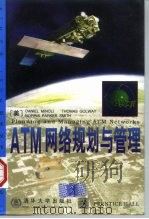
- ATM网络规划与管理 英文版
- 1998 北京:清华大学出版社
-

- 因特网霸:上网秘笈
- 北京:电子工业出版社
-

- 宽带匹配网络
- 1986 西北电讯工程学院出版社
-
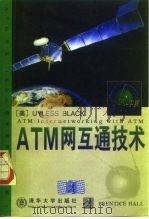
- ATM网互通技术 英文版
- 1998 北京:清华大学出版社
-

- 宽带通信网络
- 1998 北京:人民邮电出版社
-

- 漫游因特网
- 1999 北京:人民邮电出版社
-
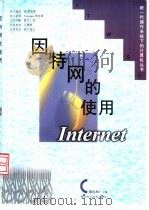
- 因特网的使用
- 1998 武汉:湖北科学技术出版社
-

- 因特网Internet
- 1997 北京:教育科学出版社
-

- 漫游因特网
- 1999 南京:江苏科学技术出版社
-

- 因特网上的通信
- 1999 南京:江苏科学技术出版社
-
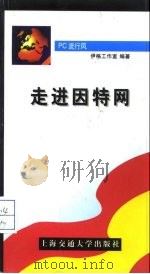
- 走进因特网
- 1998 上海:上海交通大学出版社
-
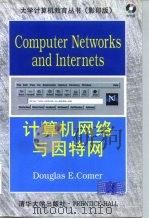
- 计算机网络与因特网
- 1998 北京:清华大学出版社
-

- 计算机网络
- 1999 北京:北京邮电大学出版社
-

- 传真三类机软硬件原理与应用
- 1997 北京:电子工业出版社
提示:百度云已更名为百度网盘(百度盘),天翼云盘、微盘下载地址……暂未提供。➥ PDF文字可复制化或转WORD
